Mysterious Lost Kingdom Of Urartu And Its Enigmatic History
A. Sutherland - AncientPages.com - The lost kingdom of Urartu is shrouded in mystery because very little is known about this ancient place and the origin of its people.
The capital of Urartu was the rock fortess Tushpa. Credit: Adobe Stock - Koraysa
Still today, archaeologists look for more traces of the mysteriously lost kingdom of Urartu, as the Assyrians called it. The Hebrews referred to it as Ararat, and in more modern times, it has been named the Kingdom of Van.
The kingdom's beginnings are lost in the mists of pre-history. Still, Urartu was situated near Lake Van and the mountainous plateau between Anatolia, Mesopotamia, the Iranian Plateau, and the Caucasus Mountains before it was destroyed. The earliest documents mention the land of Urartu can be found in Assyrian sources. This Iron Age kingdom was established around the mid-ninth century BC and conquered by the ancient Iranian people of Medes in the early 6th century BC.
Based on what we know, the people of Urartu were famous metalworkers and spoke a language related to Hurrian (a language with no other known connections). They adapted the Assyrian cuneiform script for their purposes.
Although it cannot be said with certainty, Urartu was ruled by a single dynasty from the ninth century, expanding three kingdoms to the south when Assyria was weak.
Two of the Urartian gods holding an unknown object. The plates were decorations for other items and were found at Rusahinili, an ancient Urartian fortress in Turkey. Credit: Credit: Dosseman - CC BY-SA 4.0
The true origin of the people of Urartu has yet to be discovered. Some historians think these people migrated from somewhere to the west into the Armenian plateau, then, for the most part, known as Nairi. They called themselves Khaldians or children of the god Khaldis, just as the name of the Assyrians reflects the name of their god Assur.
In 1939, Professor Shestokov, a Soviet Russian historian, wrote that the oldest states of the Soviet Union were founded 3,000 years ago to the south of Transcaucasia. The oldest among them was called Urartu. Its kings ruled over Georgian tribes.
In 1827, German scholar Friedrich Eduard Schulz first attempted to study the ancient ruins. Schulz made copies of several inscriptions and had these sent back to Paris.
Unfortunately, Schulz and his party were attacked by bandits in Kurdistan and killed in 1829.
The copies were not published until 1840 in Paris, where there were shown to be various inscriptions in Ancient Persian and Assyrian cuneiform, itself not fully translated, while the rest of the inscriptions were in an unknown language.
Left: Bronze figurine of the winged goddess Tushpuea, with suspension hook. Credit: Evgeny Genkin - CC BY 2.5 Right: Bell inscribed with the Urartian royal name Argishti, 786–756 b.c. Credit: Zunkir - CC BY-SA 4.0
In 1847 and 1850, new copies were taken of the inscriptions. Several attempts have been made to decipher the cuneiform inscriptions of Armenia through the present-day Armenian language.
The failure of these attempts has led some to believe that the inscriptions must be in some unknown, alien tongue, neither Indo-European nor Semitic.
Sooner or later, everything must end, and so the existence of the Kingdom of Urartu. The fall of the Kingdom of Urartu is shrouded in darkness. The kingdom succumbed in around 585 - 590 BCE. However, there is no written account of this event, and this timescale is not undisputed.
Archaeologist Boris Piotrovsky, who headed the excavation of Teishebaini, now Karmir Blur in modern Armenia, discovered remains of a city besieged and consumed in a great conflagration during a final night attack. He also uncovered several treasures and everyday artifacts taken to the citadel when the town was attacked.
Reconstruction of an Urartian tripod stand used for burning incense and for illumination decorated with lions made of ivory, 8th century BC, from Altintepe, Museum of Anatolian Civilizations, Ankara. Credit: Carole Raddato - CC BY-SA 2.0
The people of Urartu knew their kingdom was about to vanish and made a last attempt to hide some precious objects, hoping they would survive as a reminder of the kingdom's existence.
Unfortunately, many artifacts, including most inscribed objects, have not been excavated. Only a few (such as the cemetery at Altintepe) have been properly excavated.
It means that archaeologists have been deprived of complete and contextual knowledge of the culture, and precious history has been lost again.
For example, many Urartian cemeteries with hundreds of burial goods have been robbed.
This brilliant era of Urartu did not last long, and the kingdom disappeared rapidly from history.
Updated on July 14, 2023.
Written by – A. Sutherland AncientPages.com Staff Writer
Copyright © AncientPages.com All rights reserved. This material may not be published, broadcast, rewritten or redistributed in whole or part without the express written permission of AncientPages.com
Expand for references
References:
Armen Asher, Teryl M. Asher, The Peoples of Ararat
Lardinois R. Scholars and Prophets: Sociology of India from France in the 19th-20th Centuries
More From Ancient Pages
-
 Faces Of Queen Nefertiti And King Akhenaten Reconstructed Using Artificial Intelligence
News | Mar 22, 2021
Faces Of Queen Nefertiti And King Akhenaten Reconstructed Using Artificial Intelligence
News | Mar 22, 2021 -
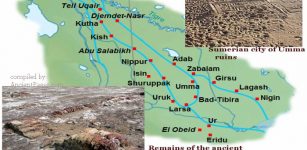 Infamous End Of Lugalzagesi – Ambitious King Who United Sumer
Featured Stories | Apr 30, 2020
Infamous End Of Lugalzagesi – Ambitious King Who United Sumer
Featured Stories | Apr 30, 2020 -
 Neanderthals Changed Ecosystems 125,000 Years Ago
Archaeology | Dec 16, 2021
Neanderthals Changed Ecosystems 125,000 Years Ago
Archaeology | Dec 16, 2021 -
 Unique Life-Sized Camel Carvings In Northern Arabia Are Much Older Than Previously Thought
Archaeology | Sep 15, 2021
Unique Life-Sized Camel Carvings In Northern Arabia Are Much Older Than Previously Thought
Archaeology | Sep 15, 2021 -
 Mahabharata And Ramayana – Two Major Sanskrit Epics Of Ancient India
Featured Stories | Jul 12, 2021
Mahabharata And Ramayana – Two Major Sanskrit Epics Of Ancient India
Featured Stories | Jul 12, 2021 -
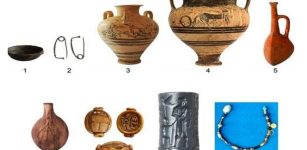 Cyprus’s Copper Deposits Created One Of The Most Important Trade Hubs Of The Bronze Age
Archaeology | Mar 17, 2023
Cyprus’s Copper Deposits Created One Of The Most Important Trade Hubs Of The Bronze Age
Archaeology | Mar 17, 2023 -
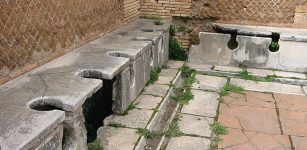 The Romans Spread Parasites – Their Hygienic Innovations Gave No Health Benefit
Archaeology | Jan 9, 2016
The Romans Spread Parasites – Their Hygienic Innovations Gave No Health Benefit
Archaeology | Jan 9, 2016 -
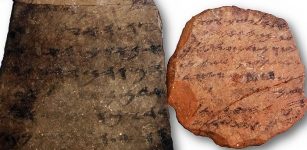 Widespread Literacy In Biblical-Period Kingdom Of Judah – Study Confirms
Archaeology | Sep 11, 2020
Widespread Literacy In Biblical-Period Kingdom Of Judah – Study Confirms
Archaeology | Sep 11, 2020 -
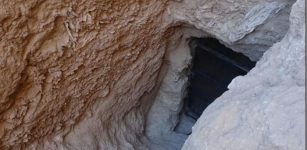 3,500-Year-Old Tomb Discovered In Luxor – Who Is The Royal Buried Inside?
Archaeology | Jan 16, 2023
3,500-Year-Old Tomb Discovered In Luxor – Who Is The Royal Buried Inside?
Archaeology | Jan 16, 2023 -
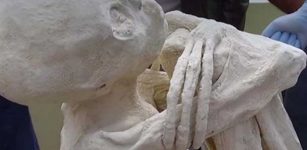 Mystery Of Nazca’s Controversial Three-Fingered Mummies Continues – Attempt To Confiscate The Ancient Remains!
Archaeology | Oct 26, 2019
Mystery Of Nazca’s Controversial Three-Fingered Mummies Continues – Attempt To Confiscate The Ancient Remains!
Archaeology | Oct 26, 2019 -
 Was The World’s Oldest Surviving Garden Created By Ancestors Of The Katzie First Nation 3,800 Years Ago In British Columbia?
Archaeology | Dec 27, 2016
Was The World’s Oldest Surviving Garden Created By Ancestors Of The Katzie First Nation 3,800 Years Ago In British Columbia?
Archaeology | Dec 27, 2016 -
 Ancient Graves That Date Back To Pre-Vijaya Era Discovered In Sri Lanka
Archaeology | Oct 21, 2015
Ancient Graves That Date Back To Pre-Vijaya Era Discovered In Sri Lanka
Archaeology | Oct 21, 2015 -
 Modern Humans Carrying The Neanderthal Variant Have Less Protection Against Oxidative Stress
Archaeology | Jan 6, 2022
Modern Humans Carrying The Neanderthal Variant Have Less Protection Against Oxidative Stress
Archaeology | Jan 6, 2022 -
 Unusual Relic That Mysteriously Disappeared From The Vatican
Artifacts | Nov 8, 2018
Unusual Relic That Mysteriously Disappeared From The Vatican
Artifacts | Nov 8, 2018 -
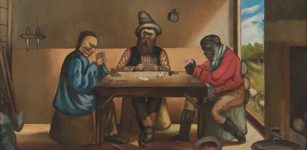 How Gold Rushes Helped Make The Modern World
Featured Stories | Aug 1, 2019
How Gold Rushes Helped Make The Modern World
Featured Stories | Aug 1, 2019 -
 New Chemical Reactions To Generate Building Blocks Of Proteins And DNA – Discovered
DNA | Jul 29, 2022
New Chemical Reactions To Generate Building Blocks Of Proteins And DNA – Discovered
DNA | Jul 29, 2022 -
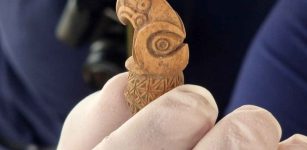 Rare 2,500-Year-Old Scythian Bone Sceptre Discovered In Bulgaria
Archaeology | Oct 3, 2023
Rare 2,500-Year-Old Scythian Bone Sceptre Discovered In Bulgaria
Archaeology | Oct 3, 2023 -
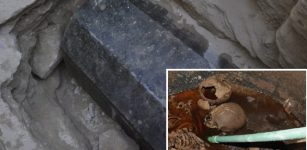 Thousands Want To Drink Red Liquid From The Granite Sarcophagus In Egypt
Archaeology | Jul 23, 2018
Thousands Want To Drink Red Liquid From The Granite Sarcophagus In Egypt
Archaeology | Jul 23, 2018 -
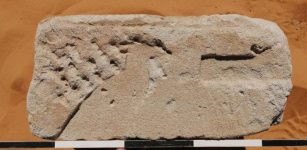 Hieroglyphs Discovered In Sudan’s Old Dongola – Once Important City Of Nubia
Archaeology | Mar 6, 2023
Hieroglyphs Discovered In Sudan’s Old Dongola – Once Important City Of Nubia
Archaeology | Mar 6, 2023 -
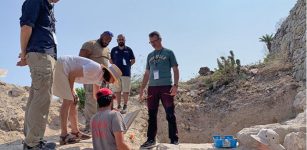 2,000-Year-Old Roman House Discovered In Malta
Archaeology | Jul 27, 2023
2,000-Year-Old Roman House Discovered In Malta
Archaeology | Jul 27, 2023




